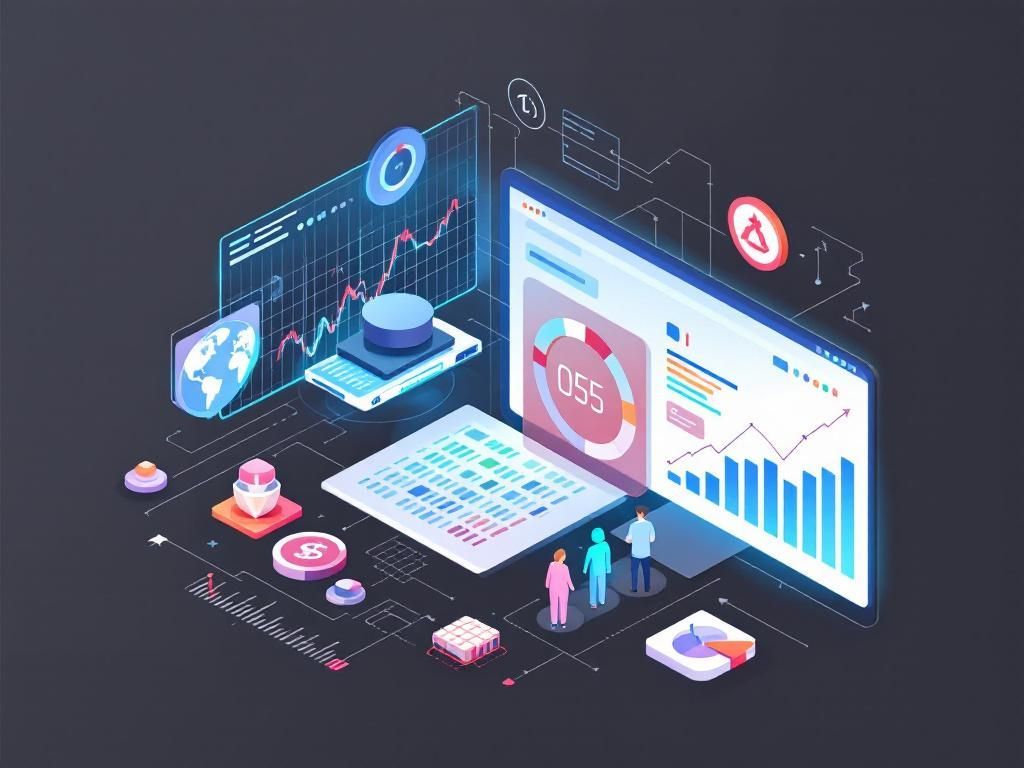The rapid evolution of artificial intelligence and machine learning has brought forth a growing reliance on data for model training and validation. However, acquiring high-quality, labeled data can be a daunting challenge. This is where synthetic data generation tools come into play, allowing organizations to create realistic datasets that mimic real-world scenarios without compromising privacy. By 2025, several tools have emerged as leaders in this domain, each boasting unique features and capabilities. In this article, we will explore the top synthetic data generation tools available today, their functionalities, and use cases.
Understanding Synthetic Data
Synthetic data is artificially generated data that resembles real data in structure and characteristics but does not originate from real-world events or transactions. This type of data can be used across various industries for:
- Training machine learning models
- Testing algorithms
- Simulating user behavior
- Ensuring data privacy and compliance
As the demand for data increases, synthetic data generation offers a cost-effective and efficient solution, particularly in fields where data is scarce or difficult to obtain.
Key Features of Top Synthetic Data Generation Tools
When evaluating synthetic data generation tools, several key features can significantly influence their effectiveness:
- Realism: The ability to produce data that accurately reflects the statistical properties of real datasets.
- Scalability: The capacity to generate large volumes of data quickly.
- Customization: Flexibility in configuring the generated data to meet specific requirements or scenarios.
- Ease of Use: A user-friendly interface that allows users with varying technical expertise to operate the tool.
- Integration: Compatibility with existing data pipelines and machine learning frameworks.
Top Synthetic Data Generation Tools in 2025
1. Synthesia
Synthesia is renowned for its ability to generate synthetic video content that can be utilized in training scenarios. Key features include:
- AI-generated avatars for creating personalized video content.
- Multilingual support, enabling global reach.
- Seamless integration with various learning management systems (LMS).
2. DataGen
DataGen specializes in generating high-fidelity 2D and 3D images for training computer vision models. Highlighted features include:
- Realistic image rendering using advanced generative adversarial networks (GANs).
- Customizable environments and object interactions.
- Support for various data formats to enhance model compatibility.
3. Synthea
Synthea is a synthetic patient generator that offers a comprehensive simulation of patient records. It is particularly useful in healthcare applications.
Features:
- Generates realistic patient data, including demographics, encounters, and medical history.
- Designed for interoperability with common healthcare standards such as HL7 and FHIR.
- Open-source and continuously updated by a community of developers.
4. Mostly AI
Mostly AI focuses on generating synthetic data that preserves privacy while retaining the utility of real data. This tool is particularly useful in sectors dealing with sensitive information.
Key Features:
- End-to-end data anonymization capabilities.
- Machine learning model training using synthetic datasets to avoid data leakage.
- Integration with existing databases for seamless data generation.
5. Hazy
Hazy is designed for organizations that prioritize data privacy and compliance. Its key features include:
- Generate synthetic data that remains statistically similar to the original dataset while ensuring privacy.
- Automated data governance tracking for compliance purposes.
- Cloud-based scalability for large datasets.
Use Cases for Synthetic Data
Synthetic data generation tools have broad applications across various sectors:
1. Finance
In finance, synthetic data can be used for:
- Risk modeling and assessment
- Fraud detection training
- Algorithmic trading simulations
2. Automotive
In the automotive industry, synthetic data is crucial for:
- Training autonomous vehicle systems under varied conditions.
- Simulating driver behavior and traffic scenarios.
- Improving computer vision systems for object detection.
3. Healthcare
Healthcare organizations use synthetic data for:
- Training machine learning models for diagnostics.
- Testing healthcare applications without compromising patient privacy.
- Clinical trial simulations to predict outcomes.
Challenges and Considerations
While synthetic data generation offers numerous advantages, challenges remain:
- Quality Assurance: Ensuring the synthetic data produced is of high quality and truly representative of real-world scenarios.
- Ethical Concerns: The potential misuse of synthetic data in generating misleading information or deepfakes.
- Regulatory Compliance: Navigating the legal landscape surrounding data usage and synthetic data regulations.
The Future of Synthetic Data Generation
As technology continues to advance, the future of synthetic data generation looks promising. The integration of AI and machine learning will enhance the realism and applicability of generated datasets. Innovations may include:
- Improved algorithms for generating more complex data structures.
- Broader acceptance of synthetic data in regulatory frameworks.
- Enhanced tools for evaluating the quality and effectiveness of synthetic datasets.
Conclusion
In 2025, synthetic data generation tools play a pivotal role in transforming how organizations utilize data for training and testing. With a strong emphasis on realism, privacy, and ease of use, the tools mentioned in this article are setting the standard for what synthetic data can achieve. By embracing these technologies, organizations can innovate faster, reduce costs, and navigate the complexities of data-driven decision-making.
FAQ
What are synthetic data generation tools?
Synthetic data generation tools are software applications that create artificial data that mimics real-world data. They are used in various fields like machine learning, testing, and data analysis to provide datasets without compromising privacy.
Why is synthetic data important for machine learning?
Synthetic data is important for machine learning because it allows for the creation of large datasets that can be used for training models, especially when real data is scarce, sensitive, or difficult to obtain.
What features should I look for in synthetic data generation tools?
When choosing synthetic data generation tools, look for features such as data diversity, scalability, customization options, ease of integration, and support for various data formats.
How do synthetic data generation tools ensure data privacy?
Synthetic data generation tools ensure data privacy by creating datasets that do not contain any personally identifiable information (PII) and by using techniques such as differential privacy to protect sensitive information.
Can synthetic data replace real data in analytics?
While synthetic data can supplement or replace real data in many scenarios, it is essential to validate the accuracy and relevance of the synthetic data to ensure reliable analytics results.
What are some popular synthetic data generation tools in 2025?
Some popular synthetic data generation tools in 2025 include Synthea, DataSynthesizer, and Mostly AI, which are known for their advanced features and usability in various applications.




